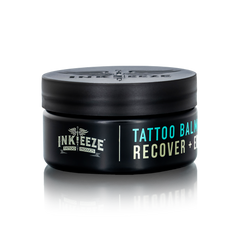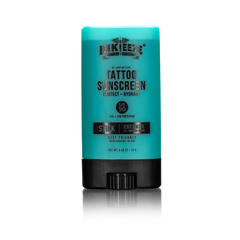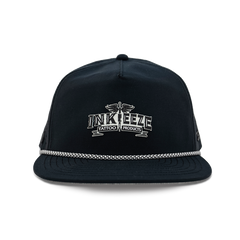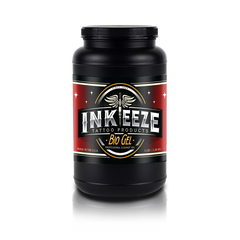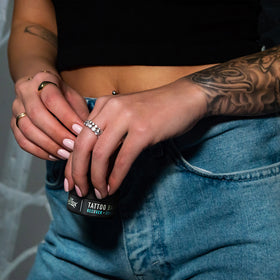This article seeks to answer the following questions:
-
What causes tattoo blowouts and fading
-
How to deal with tattoo blowouts and fading
-
Common mistakes to avoid for tattoo enthusiasts and
Blowouts and fading are some of the most common problems associated with tattoos. They are major reasons most people fear getting new pieces, as they significantly affect how tattoos look. They can also be difficult and expensive to remove. For example, blowouts are mostly fixed through laser therapy, cover-up tattoos, and surgical tattoo removal- options that are quite costly. To make your tattoo experience worthy, our article will guide you on avoiding and preventing these two common tattoo problems. Let's get right into that!
Understanding Tattoo Blowouts
This chapter discusses tattoo blowouts and how they can be fixed and prevented.
Causes of Tattoo Blowouts
You are most likely staring at a blowout if your tattoo looks blurry. Blowouts occur when ink is injected past the top layer of the skin and into the subcutaneous or fat layer, creating a distortion. Signs usually appear in a few days or weeks. Whether mild or extreme, blowouts cause the line-creating ink to spread outside the tattoo's edges. Most blowouts give tattoos a smudged appearance, which explains why they are easier to notice.
How to Fix Tattoo Blowouts
There are three main ways of fixing tattoo blowouts, and we have to mention that they are pretty expensive. The least expensive means is to get cover-up tattoos to camouflage the blowout, which may cost you up to $400 depending on the size of the tattoo and how extreme the blowout is. Note that you cannot get a cover-up tattoo instantly, as you must give your previous ink at least two months to heal. Also, you have to stick to the aftercare routine to promote proper healing. Even though a good coverup tattoo artist can help you retain your tattoo's appearance, a severe blowout may force you to settle for a bigger tattoo than the original or go with a darker shade.
You can also settle for laser therapy admitted using a Q-switched laser to reduce the blowout's appearance. The energy waves sent by the laser will be absorbed by the ink particles, which then get diffused and absorbed into your skin. In the end, you will retain your tattoo, which you must now take good care of by keeping it away from direct sunlight as much as possible to prevent fading. However, note that this process does not work for some and may require 5+ sessions depending on how your body reacts to it and the extent of your blowout. The cost depends on the age, size, and color of the tattoo, with the American Society of Plastic Surgeons estimating the average cost to be $423.
The last means is surgical tattoo removal, which gets rid of the entire tattoo. It's an invasive method, requiring the surgeon to remove the tattooed skin before sewing up the tattooed area back. It is the only option to fully get rid of blown-out tattoos. You will most likely be left with a scar, and it may even take a long duration to heal, depending on the size of your tattoo.
How to Prevent Tattoo Blowouts
Since most blowouts result from getting tattoos from artists who lack experience and high concentration levels, choosing the right tattoo artist is one of the best prevention mechanisms. Settle for a skilled and experienced tattoo artist even though their services do not usually come cheap. You should also consider your tattoo placement, i.e., choose areas with thicker skin, such as your forearm or legs.
How to Reduce Blowouts During the Tattoo Process
To prevent blowouts during the tattoo process, remember to select the right needle, avoid overworking your skin, and properly clean the skin once the tattoo is done. While cleaning, use antibacterial soap and water and pat your skin dry instead of rubbing it. This last process will prevent any irritations.
Understanding Tattoo Fading
Your tattoos may fade after some time, especially if not cared for well. The fading may also occur naturally when immune system cells absorb and spread the ink. Other causes of tattoo fading include failing to take good initial care of your ink, too much exposure to sunlight, poor ink quality, improper tattoo placement, and poor healing quality. A bad overall skin care routine occasioned by not drinking enough water or keeping the skin moisturized can also lead to increased fading.
Faded tattoos usually appear less vibrant and are, in most cases, less attractive than they used to be. What, then, is the best way to deal with tattoo fading?
How to Prevent Tattoo Fading
Proper Aftercare
You have to take good care of your ink, especially in the first hours and days. Listen to what your tattoo artist tells you regarding aftercare, and above all, remember to keep the fresh tattoo clean. You should also apply a good moisturizer such as Ink Enhance Daily Tattoo Moisturizer, which contains powerful ingredients such as Alanine and Avocado oil. Alternatively, you can get an aftercare cream to soothe and repair your tattoed skin.
Choosing High-Quality Ink
Choosing quality tattoo ink will give your tattoo a long-lasting shine and a vibrant look. You don't want to spend $400+ on a tattoo only to have it fade within the year because of using ink with less and cheaper pigments. Ensure that your tattoo artist uses inks with pure and concentrated pigments.
Protecting the Tattoo from UV Rays
Avoid exposing your tattoo to direct sunlight, which is one of the significant causes of tattoo fading. Use water-resistant sunscreens rated SPF50+.
FAQs
What is the Best Way to Prevent a Tattoo Blowout?
The best way to prevent a tattoo blowout is to pick a skilled and experienced tattoo artist. Additionally, consider your tattoo placement.
How Often Should I Touch Up My Tattoo?
Ensure that you touch up your tattoo at least once every six months. Note that touch-ups should only happen when your tattoo is healed.
Can a Tattoo Artist Fix a Tattoo That Has a Blowout?
A tattoo artist can only fix a tattoo with a blowout through a cover-up tattoo.
How Can I Tell If a Tattoo is Fading?
A faded tattoo usually loses its vibrance or shine


